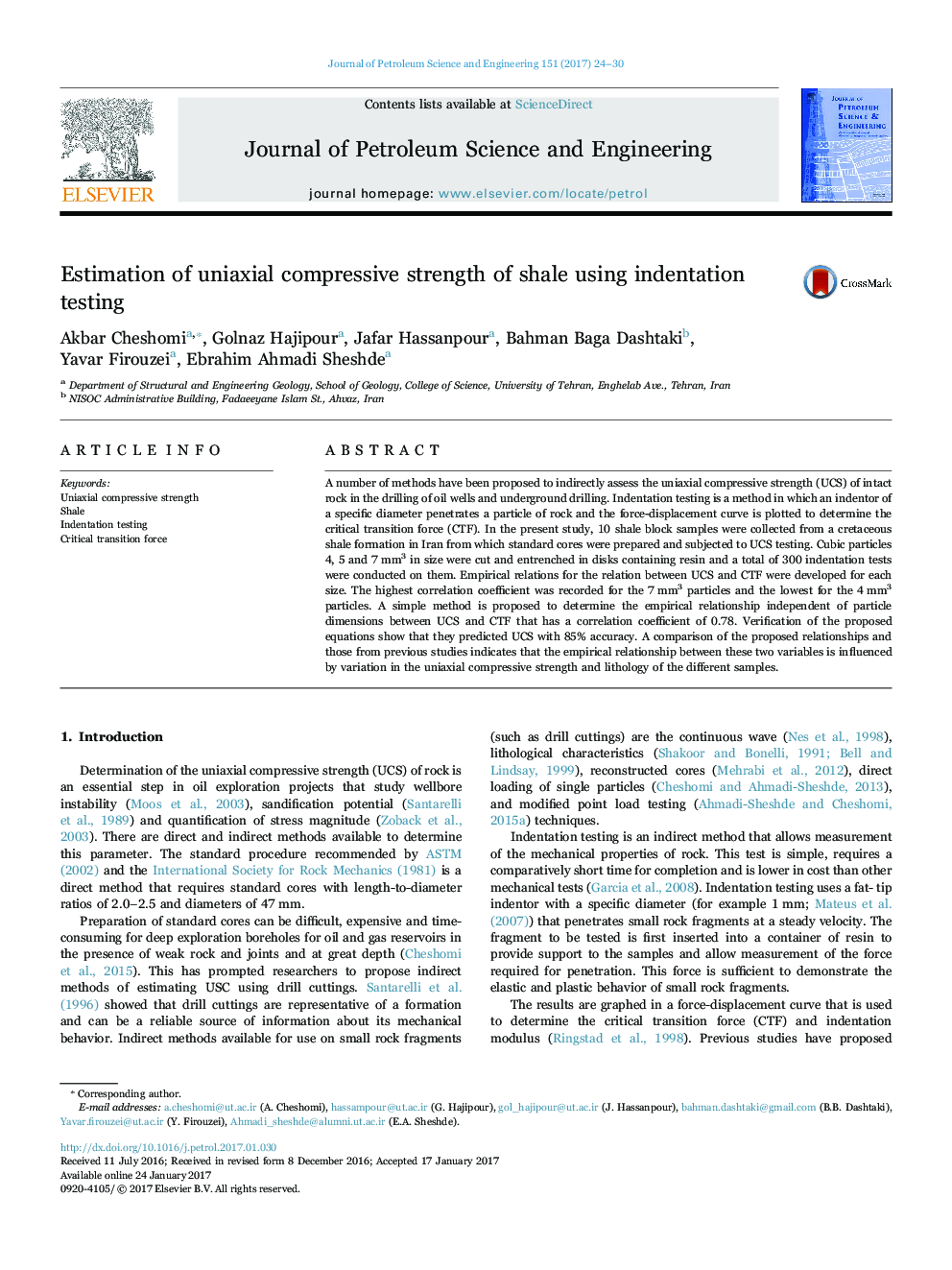| Article ID | Journal | Published Year | Pages | File Type |
|---|---|---|---|---|
| 5484359 | Journal of Petroleum Science and Engineering | 2017 | 7 Pages |
Abstract
A number of methods have been proposed to indirectly assess the uniaxial compressive strength (UCS) of intact rock in the drilling of oil wells and underground drilling. Indentation testing is a method in which an indentor âof a specific diameter penetrates a particle of rock and the force-displacement curve is plotted to determine the critical transition force (CTF). In the present study, 10 shale block samples were collected from a cretaceous shale formation in Iran from which standard cores were prepared and subjected to UCS testing. Cubic particles 4, 5 and 7Â mm3 in size were cut and entrenched in disks containing resin and a total of 300 indentation tests were conducted on them. Empirical relations for the relation between UCS and CTF were developed for each size. The highest correlation coefficient was recorded for the 7Â mm3 particles and the lowest for the 4Â mm3 particles. A simple method is proposed to determine the empirical relationship independent of particle dimensions between UCS and CTF that has a correlation coefficient of 0.78. Verification of the proposed equations show that they predicted UCS with 85% accuracy. A comparison of the proposed relationships and those from previous studies indicates that the empirical relationship between these two variables is influenced by variation in the uniaxial compressive strength and lithology of the different samples.
Related Topics
Physical Sciences and Engineering
Earth and Planetary Sciences
Economic Geology
Authors
Akbar Cheshomi, Golnaz Hajipour, Jafar Hassanpour, Bahman Baga Dashtaki, Yavar Firouzei, Ebrahim Ahmadi Sheshde,
